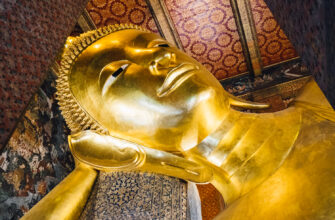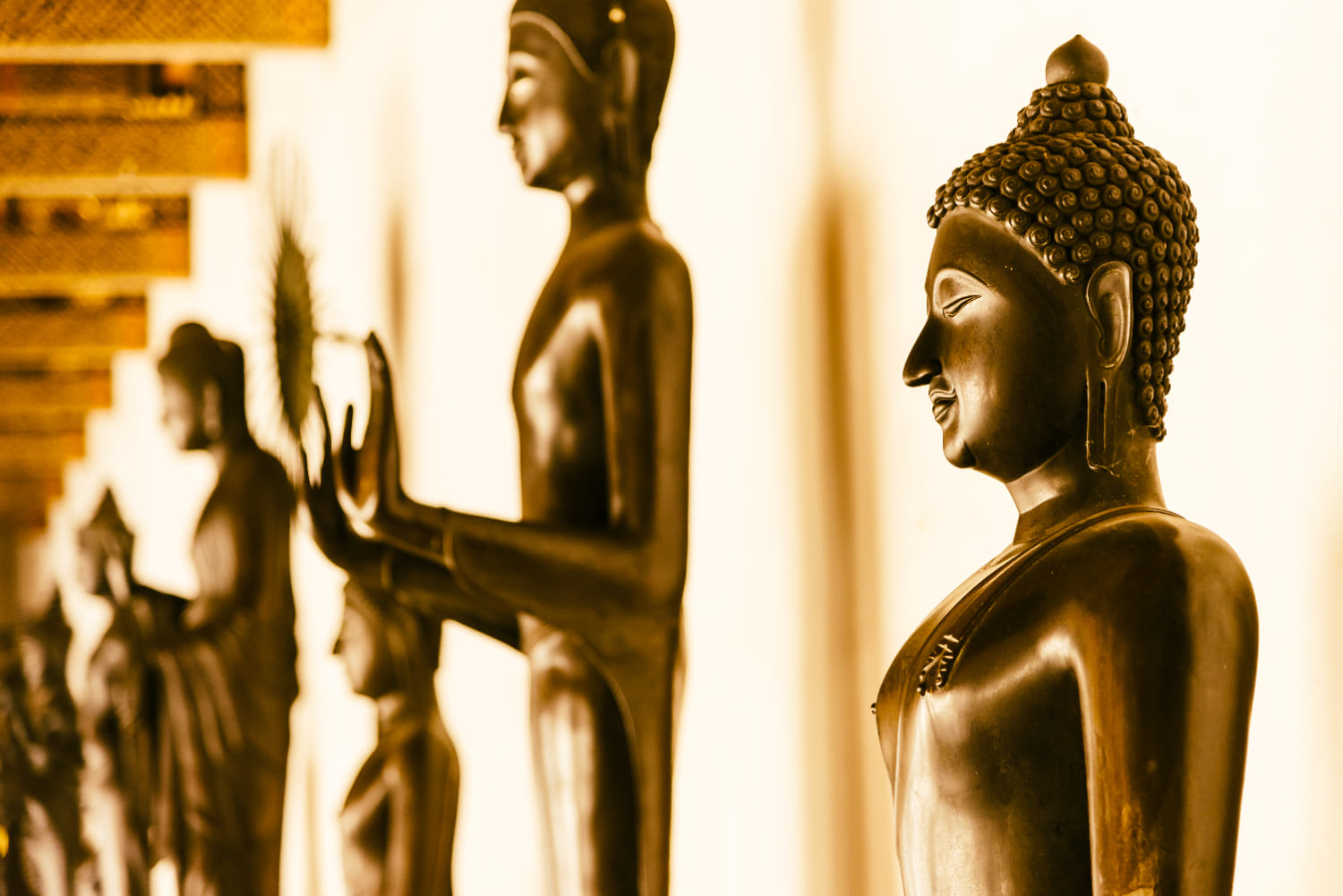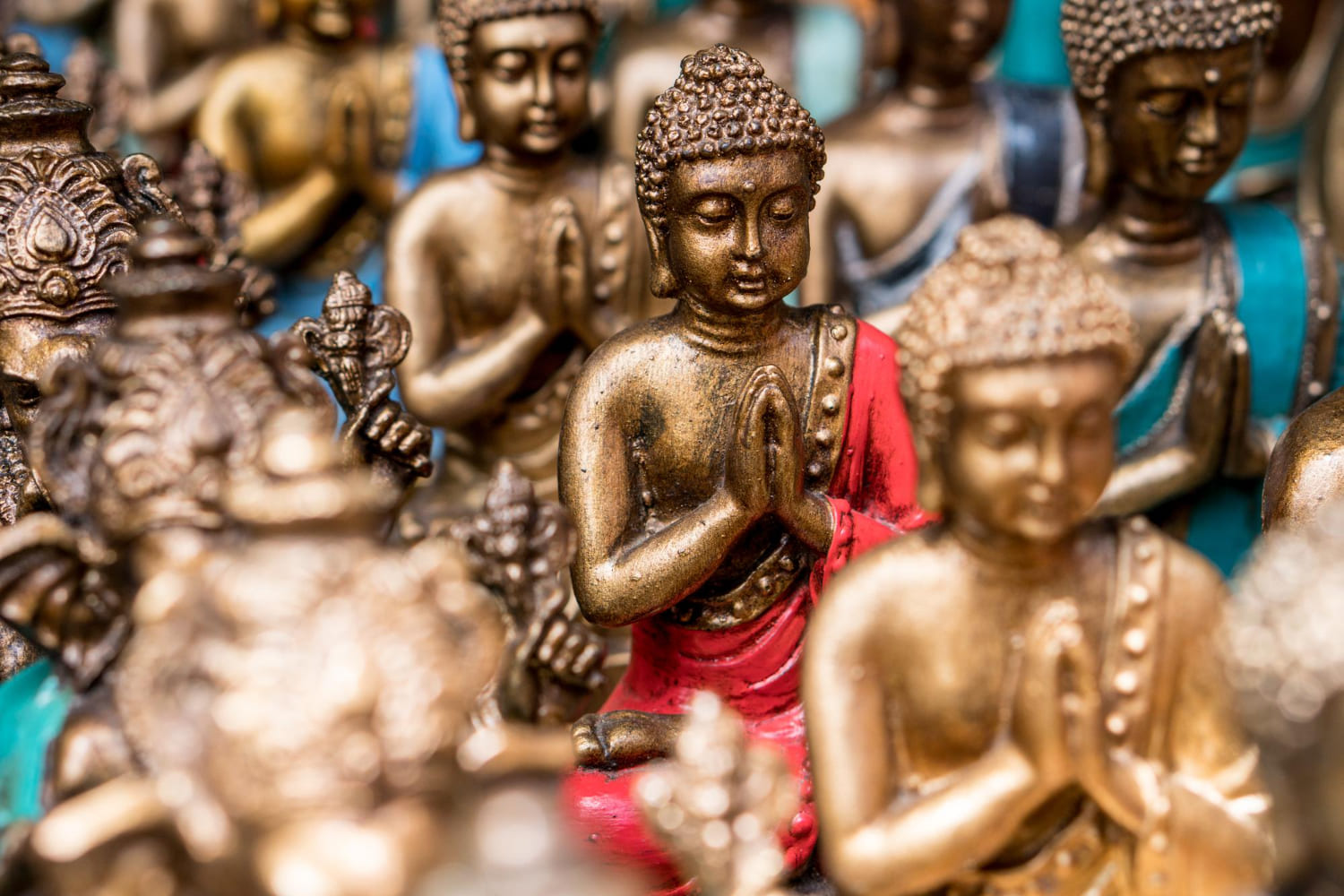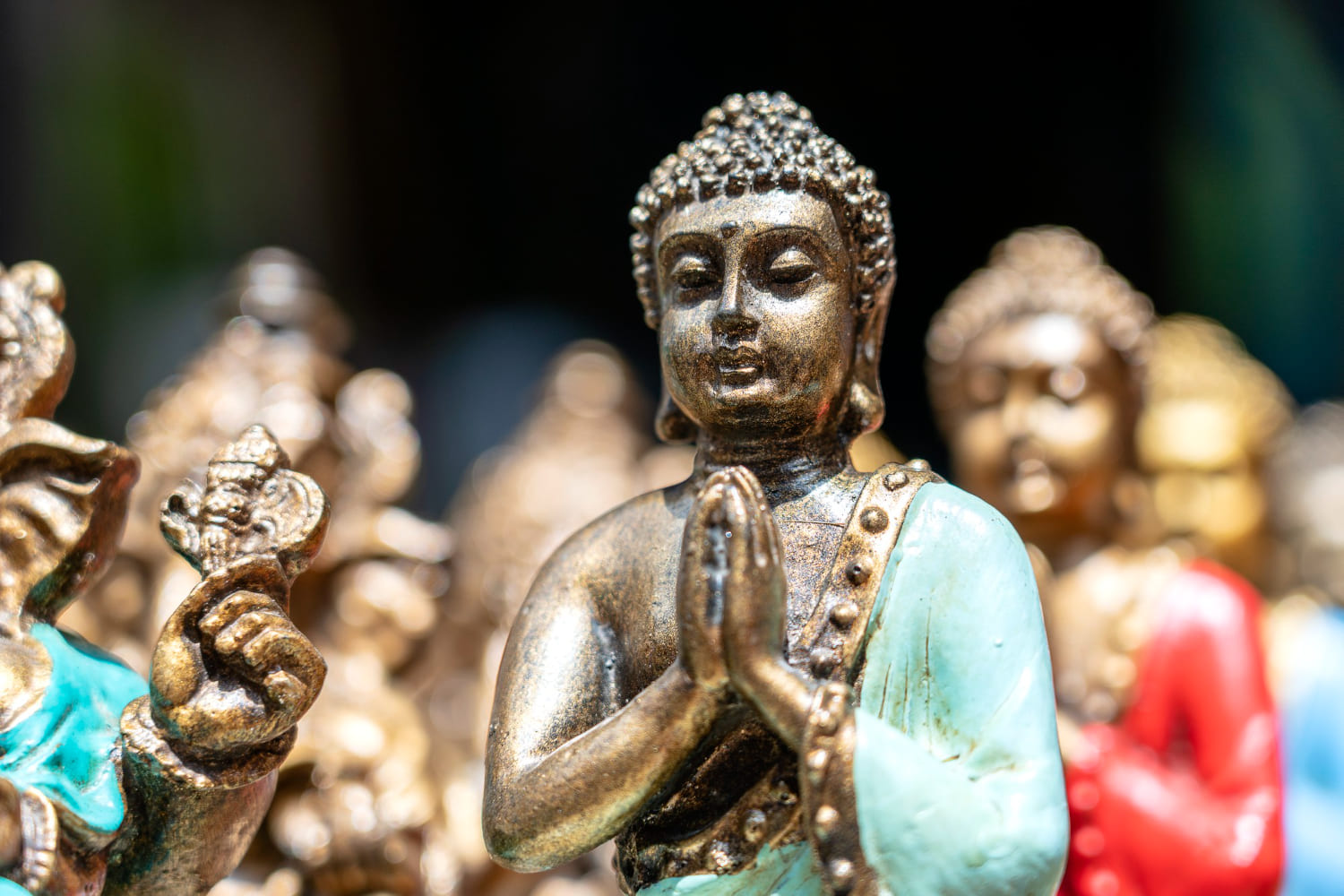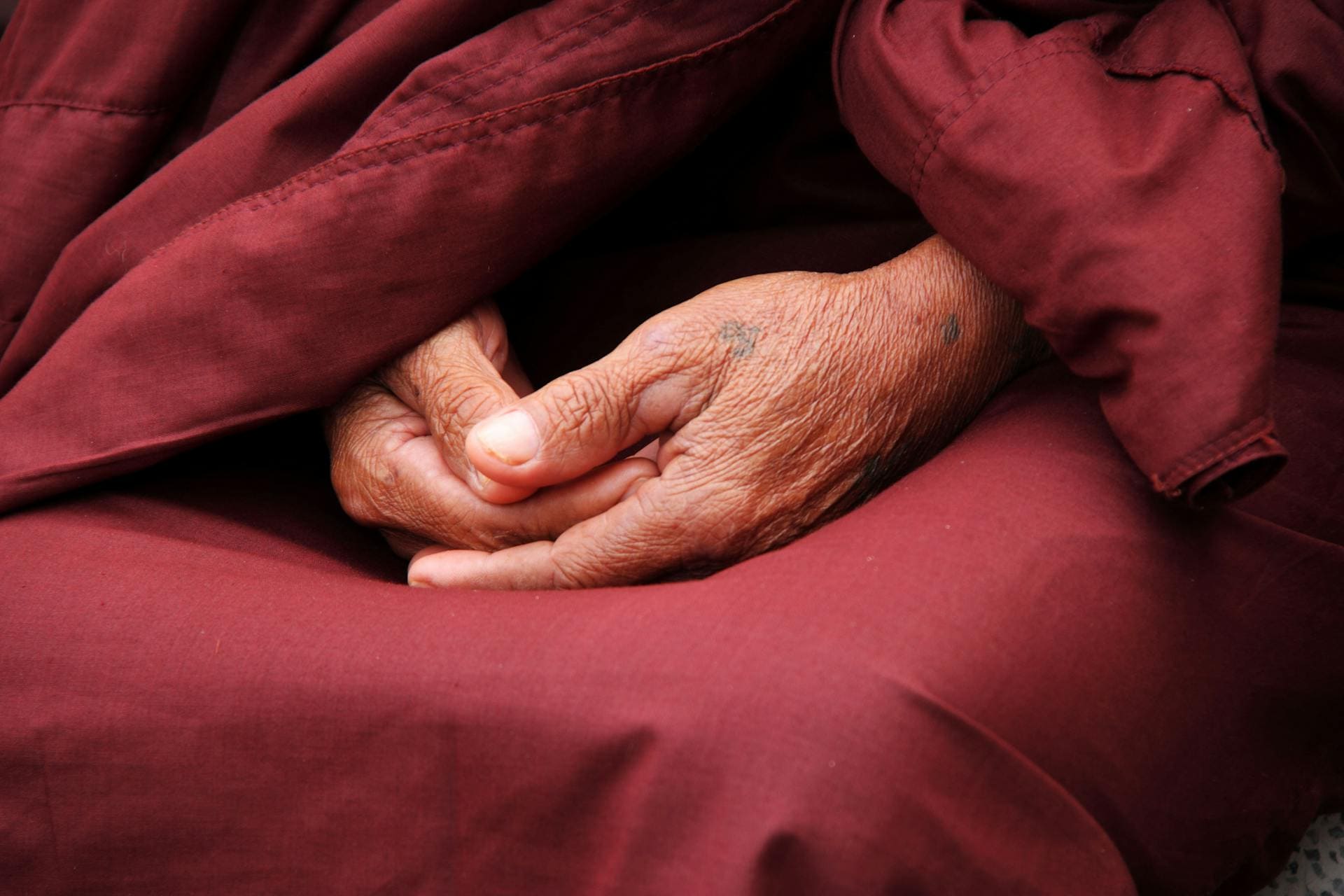Buddhism is a religion and philosophy that originated in ancient India and has since spread around the world.
It is based on the teachings of the Buddha, also known as Siddhartha Gautama, who lived in northern India between the mid-6th and mid-4th centuries BCE.
Buddhism is often described as a path to enlightenment, and its beliefs and practices are aimed at helping individuals achieve inner peace and happiness.
At the core of Buddhist beliefs is the Four Noble Truths, which state that life is suffering, suffering is caused by craving and attachment, suffering can be overcome, and the way to overcome it is through the Eightfold Path.
The Eightfold Path consists of right understanding, right intention, right speech, right action, right livelihood, right effort, right mindfulness, and right concentration.
These principles guide Buddhists on their spiritual journey and help them lead a more fulfilling life.
The Four Noble Truths
Buddhism is based on the Four Noble Truths, which are considered to be the foundation of Buddhist beliefs. The Four Noble Truths were first taught by the Buddha, Siddhartha Gautama, over 2,500 years ago.
They are:
- The truth of suffering (dukkha)
- The truth of the cause of suffering (samudaya)
- The truth of the end of suffering (nirodha)
- The truth of the path that leads to the end of suffering (magga)
The first Noble Truth states that suffering is an inherent part of life. It encompasses physical and emotional pain, as well as the suffering caused by impermanence and attachment. This truth is not meant to be pessimistic, but rather a recognition of the reality of human existence.
The second Noble Truth explains that the cause of suffering is craving and attachment. When we desire things, people, or situations to be a certain way, we set ourselves up for disappointment and suffering when they inevitably change or do not meet our expectations.
The third Noble Truth offers hope, as it states that the cessation of suffering is possible. By letting go of attachment and craving, we can find peace and freedom from suffering.
The fourth Noble Truth provides a path to the end of suffering. This path is known as the Eightfold Path and includes right understanding, right intention, right speech, right action, right livelihood, right effort, right mindfulness, and right concentration. By following this path, one can achieve enlightenment and liberation from suffering.
Overall, the Four Noble Truths provide a framework for understanding the nature of suffering and offer a path to finding peace and freedom from it. They are a fundamental aspect of Buddhist beliefs and teachings.
The Eightfold Path
The Eightfold Path is one of the core teachings of Buddhism. It is a set of eight practices that guide followers on the path to enlightenment. The Eightfold Path is often divided into three categories: Wisdom, Ethical Conduct, and Mental Discipline.
The Eightfold Path includes:
- Right View
- Right Intention
- Right Speech
- Right Action
- Right Livelihood
- Right Effort
- Right Mindfulness
- Right Concentration
Right View and Right Intention are the Wisdom components of the Eightfold Path. They involve developing a clear understanding of the Four Noble Truths and the nature of reality. Right Speech, Right Action, and Right Livelihood are the Ethical Conduct components. They involve living a moral and ethical life, free from harm to oneself or others. Right Effort, Right Mindfulness, and Right Concentration are the Mental Discipline components. They involve developing mental clarity, focus, and concentration through meditation and other practices.
Through following the Eightfold Path, Buddhists aim to overcome suffering and achieve enlightenment. The path is not meant to be followed in a linear fashion, but rather as a set of interrelated practices that support each other. By living in accordance with the Eightfold Path, Buddhists believe they can develop greater wisdom, compassion, and inner peace.
Karma and Rebirth
Buddhism teaches that karma is the law of moral causation. It is the idea that every action has a consequence, and that our present experiences are the result of our past actions. Karma is not fate or predestination, but rather the result of our own actions and intentions. It is a dynamic force that can be changed through our own efforts and actions.
According to Buddhist teachings, rebirth is the continuation of the individual consciousness after death. It is believed that after we die, our consciousness continues and takes on a new form. This new form is determined by our karma, which can lead to rebirth in a higher or lower realm. The ultimate goal of Buddhism is to achieve liberation from this cycle of rebirth, known as samsara, and attain enlightenment.
In Theravada Buddhism, it is taught that three factors are necessary for rebirth: the mother’s egg, the father’s sperm, and the energy of karma (kamma-vega in Pali). In other words, the energy of the karma we create survives us and causes rebirth.
Karma and rebirth are closely linked in Buddhist thought. Our actions in this life affect our future lives, and our future lives are determined by our past actions. This cycle can only be broken by achieving enlightenment and ending the cycle of rebirth.
The Three Universal Truths
Buddhism is a religion that is built upon the foundation of the Four Noble Truths, which are the core beliefs of this faith.
The Four Noble Truths are:
- The truth of suffering (dukkha)
- The truth of the cause of suffering (samudaya)
- The truth of the cessation of suffering (nirodha)
- The truth of the path to the cessation of suffering (magga)
However, before the Buddha taught the Four Noble Truths, he first taught the Three Universal Truths, which are:
- Anicca – Everything is impermanent
- Dukkha – Life is marked by dissatisfaction
- Anatta – There is no permanent, unchanging self
The Three Universal Truths are considered to be the foundation of Buddhist philosophy, and they are the basis for understanding the Four Noble Truths. They are also referred to as the Three Marks of Existence, as they describe the nature of all things in the universe.
The first Universal Truth, Anicca, teaches us that everything is impermanent and constantly changing. This includes everything from material objects to emotions and even our own bodies. The second Universal Truth, Dukkha, explains that life is marked by dissatisfaction and suffering.
This suffering can arise from physical pain, emotional turmoil, or even the simple fact that nothing in life is permanent. Finally, the third Universal Truth, Anatta, teaches us that there is no permanent, unchanging self.
This means that our identities are constantly changing and evolving, and that we are not defined by any one thing.
By understanding and accepting the Three Universal Truths, Buddhists believe that they can find peace and happiness in life.
They acknowledge the impermanence and suffering in the world, and strive to let go of attachment to things that are fleeting. This allows them to focus on the present moment and find joy in the journey of life.
The Five Precepts
Buddhism is a religion that emphasizes the importance of living a moral life. One of the ways that Buddhists do this is by following the Five Precepts. These precepts are a set of guidelines for daily life that all Buddhists are encouraged to observe.
The Five Precepts are:
- Do not harm or kill living things.
- Do not take things unless they are freely given.
- Lead a decent life.
- Do not speak unkindly or tell lies.
- Do not abuse drugs or drink alcohol.
These precepts are not meant to be restrictive, but rather to help individuals live a life that is free from suffering. By following these guidelines, Buddhists aim to cultivate a sense of inner peace and contentment.
It is important to note that these precepts are not commandments, but rather suggestions. Buddhists are encouraged to follow these precepts to the best of their ability, but it is understood that nobody is perfect and mistakes will be made.
Furthermore, it is important to understand that these precepts are not only for monks and nuns but also for laypeople.
All practicing Buddhists are encouraged to observe these precepts, regardless of their level of involvement in the religion.
The Four Divine Abodes
In Buddhism, the Four Divine Abodes, or Brahma-vihara, are four qualities of the mind that are cultivated through meditation.
These four qualities are:
- Loving-kindness (Metta)
- Compassion (Karuna)
- Sympathetic Joy (Mudita)
- Equanimity (Upekkha)
Practicing these qualities can help develop a more positive and compassionate outlook on life. Metta, or Loving-kindness, is the practice of cultivating a sincere and unconditional love for all beings.
This practice involves wishing happiness and well-being for oneself and others, regardless of their background or circumstances.
Karuna, or Compassion, is the practice of empathizing with the suffering of others and wishing to alleviate it. This practice involves developing a deep sense of empathy and compassion for all beings, and taking action to help relieve their suffering whenever possible.
Mudita, or Sympathetic Joy, is the practice of rejoicing in the happiness and success of others. This practice involves cultivating a sense of joy and happiness when others experience good fortune, and avoiding feelings of jealousy or envy.
Upekkha, or Equanimity, is the practice of developing a balanced and impartial mind. This practice involves cultivating a sense of calm and equanimity in the face of both pleasure and pain, and avoiding attachment to either.
Overall, the practice of the Four Divine Abodes can help develop a more compassionate and positive outlook on life, and can help cultivate a sense of inner peace and well-being.
By practicing these qualities regularly, one can cultivate a more loving, compassionate, and joyful mind, and can help spread these qualities to others.
The Three Jewels
One of the most fundamental beliefs in Buddhism is the concept of the Three Jewels, also known as the Triple Gem and the Three Treasures. These are the Buddha, the Dharma, and the Sangha.
The Buddha is the exemplar or the enlightened one who has achieved the ultimate goal of Buddhism, which is to attain Nirvana or enlightenment. The Buddha serves as a guide and a role model for Buddhists to follow in their own quest for enlightenment.
The Dharma refers to the teachings of the Buddha. It includes the Four Noble Truths, the Noble Eightfold Path, and other teachings that guide Buddhists on their path towards enlightenment. The Dharma is considered to be the ultimate truth that can liberate individuals from suffering and ignorance.
The Sangha refers to the community of Buddhist practitioners who follow the teachings of the Buddha. The Sangha provides support, guidance, and inspiration for Buddhists on their spiritual journey. It is also a source of wisdom and knowledge that has been passed down from generation to generation.
Together, the Three Jewels serve as the foundation of Buddhist belief and practice. By taking refuge in the Three Jewels, Buddhists affirm their commitment to the path of enlightenment and seek guidance and support from the Buddha, the Dharma, and the Sangha.
The Three Poisons
In Buddhist teachings, the three poisons are the primary causes of suffering and keep sentient beings trapped in samsara. These poisons are referred to as the akusala-mula in Sanskrit and Pali, which means “unskillful root.”
The three poisons are:
- Greed (lobha or raga) – a craving for material possessions or sensory experiences
- Hatred (dvesha) – an aversion to situations or people that cause discomfort or pain
- Delusion (moha) – a lack of understanding or ignorance of the true nature of reality
The three poisons are opposed by three wholesome attitudes essential to liberation:
| Poison | Wholesome Attitude |
|---|---|
| Greed | Generosity (dana) |
| Hatred | Lovingkindness (maitri or metta) |
| Delusion | Wisdom (prajna) |
The three poisons are also known as the three kleshas, which are the root of all other kleshas. Kleshas are mental states that cause suffering and prevent one from achieving enlightenment.
By recognizing and overcoming the three poisons, one can attain liberation and enlightenment.
Dependent Origination
Dependent origination, also known as conditioned co-arising, is a fundamental concept in Buddhism that teaches that everything that exists is conditioned and dependent on something else.
This applies to thoughts as well as objects, to the individual as well as the entire universe. Nothing exists independently.
There are twelve links in the Law of Dependent Origination, which can be divided into three categories: past causes, present effects, and future causes. The first two links have to do with causes in the last life which condition birth in this one.
The first of these links is ignorance. Ignorance means not knowing the truth, not understanding the Dharma, ignorance of the four noble truths.
The second link is volitional formations, which refers to the actions and intentions that arise from ignorance.
These actions and intentions create karma, which then conditions the next link, consciousness.
Consciousness refers to the awareness of an object and the ability to experience it. From consciousness arise the remaining links: name and form, the six senses, contact, feeling, craving, clinging, becoming, and birth.
These links are the present effects of past causes and the future causes of future effects. They form a chain of causation that perpetuates the cycle of birth, death, and rebirth.
Dependent origination teaches that everything is impermanent and constantly changing, and that suffering arises from attachment to things that are impermanent.
By understanding the chain of causation and breaking the cycle of ignorance, one can achieve liberation from suffering and attain enlightenment.
The Five Aggregates
Buddhism teaches that every person is made up of five aggregates, or skandhas, which are the physical and mental components of our being.
Understanding these five aggregates is essential to understanding the Buddhist concept of non-self, or anatta, which states that there is no permanent, unchanging self or soul.
The five aggregates are:
- Rupa: This is the physical body, or matter aggregate. It is made up of the four elements: earth, air, fire, and water.
- Vedana: This is the aggregate of sensation, or the physical and emotional feelings that arise in response to our experiences.
- Samjna: This is the aggregate of perception, or the mental recognition and interpretation of our experiences.
- Samskara: This is the aggregate of mental formations, or the mental habits, impulses, and tendencies that shape our thoughts and actions.
- Vijnana: This is the aggregate of consciousness, or the awareness that arises from our experiences and perceptions.
According to Buddhism, these five aggregates are constantly changing and are impermanent. They arise and pass away in response to our experiences, and there is no permanent self or soul that exists beyond them.
Instead, our sense of self is created by the interaction of these aggregates.
By understanding the nature of the five aggregates and recognizing that they are impermanent and constantly changing, Buddhists seek to overcome suffering and achieve enlightenment.
By letting go of attachment to the aggregates and recognizing their impermanence, Buddhists can free themselves from the cycle of birth, death, and rebirth and attain a state of peace and liberation.
The Six Realms of Existence
Buddhist cosmology identifies six realms of rebirth and existence. These realms are a description of conditioned existence, or samsara, into which beings are reborn.
The six realms are:
- The god realm
- The demigod realm
- The human realm
- The animal realm
- The hungry ghost realm
- The hell realm
The god realm is the realm of the gods, who experience great pleasure and luxury. The demigod realm is the realm of the demigods, who experience some pleasure but also a lot of fighting and jealousy.
The human realm is the realm of humans, who experience both pleasure and pain. The animal realm is the realm of animals, who experience mostly pain and suffering.
The hungry ghost realm is the realm of beings who are always hungry and thirsty but can never be satisfied. The hell realm is the realm of beings who experience extreme pain and suffering.
It is believed that beings are reborn into one of these realms based on their karma, or the actions they have taken in their previous lives. The goal of Buddhism is to break free from the cycle of rebirth and attain enlightenment, which is the end of suffering.
The Ten Paramitas
In Mahayana Buddhism, the ten paramitas are ten virtues or perfections that are essential for achieving enlightenment. These virtues are cultivated by bodhisattvas, individuals who seek to become enlightened for the benefit of all beings.
The ten paramitas are:
- Dana Paramita: The perfection of generosity or giving. This involves giving without expectation of reward or recognition.
- Sila Paramita: The perfection of morality or ethical conduct. This involves following the precepts and refraining from harming others.
- Kshanti Paramita: The perfection of patience or forbearance. This involves developing the ability to endure difficulties and hardship without becoming discouraged or angry.
- Virya Paramita: The perfection of energy or effort. This involves making a sustained effort to practice the dharma and overcome obstacles on the path to enlightenment.
- Dhyana Paramita: The perfection of meditation. This involves cultivating a calm and focused mind through meditation.
- Prajna Paramita: The perfection of wisdom. This involves developing insight into the nature of reality and the nature of the self.
- Upaya Paramita: The perfection of skillful means. This involves using skillful means to help others on the path to enlightenment.
- Pranidhana Paramita: The perfection of aspiration or dedication. This involves dedicating oneself to the path to enlightenment and the benefit of all beings.
- Bala Paramita: The perfection of strength or power. This involves developing inner strength and power through the practice of the dharma.
- Jnana Paramita: The perfection of knowledge or insight. This involves developing a deep understanding of the dharma and the nature of reality.
The ten paramitas are often depicted as a ladder, with each virtue building upon the previous one.
By cultivating these virtues, bodhisattvas are able to progress on the path to enlightenment and ultimately achieve Buddhahood. The paramitas are not just theoretical concepts, but are meant to be put into practice in everyday life.
By embodying these virtues, we can become more compassionate, wise, and skillful in helping others.
Conclusion
Throughout this guide, we have explored the core beliefs, origin, systems, and practice of Buddhism. We have learned that Buddhism is a non-theistic religion that focuses on the individual’s path to enlightenment through the Four Noble Truths and the Eightfold Path.
One of the most important concepts in Buddhism is karma, the idea that our actions have consequences that affect us in this life and in future lives. Another essential belief is reincarnation, the concept that people are reborn after dying.
Buddhism also emphasizes the importance of meditation as a tool to help individuals develop mindfulness and concentration.
The Five Precepts provide guidance on ethical behavior, while the Noble Eightfold Path outlines the steps to follow to achieve enlightenment.
Overall, Buddhism offers a unique perspective on the nature of existence and the path to spiritual enlightenment.
Whether you are a practicing Buddhist or simply interested in learning more about this fascinating religion, we hope this guide has provided you with a valuable introduction to Buddhist beliefs.
